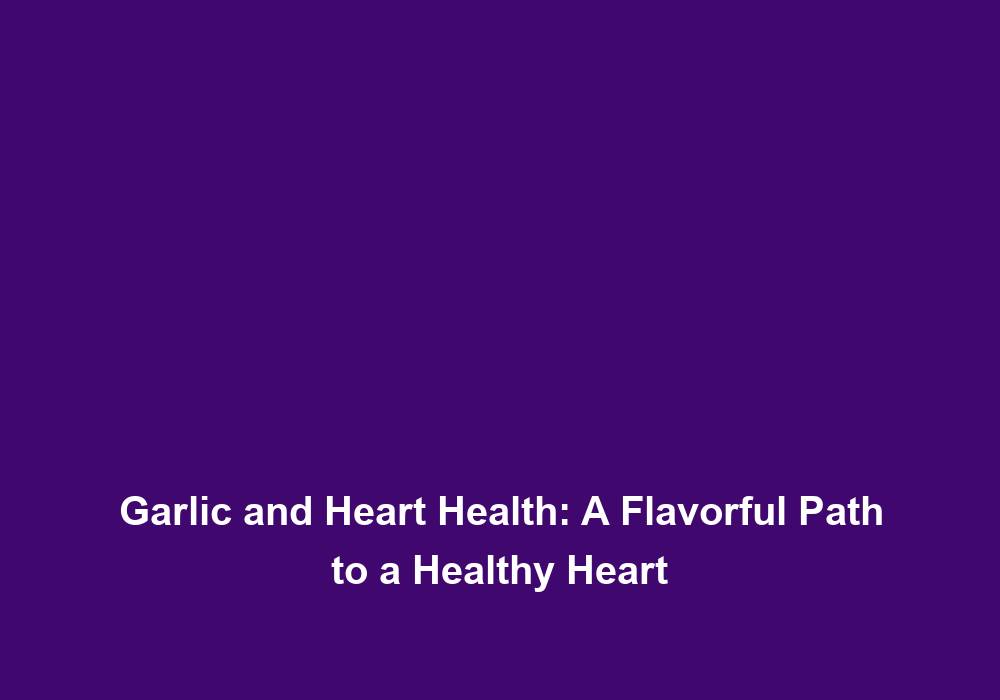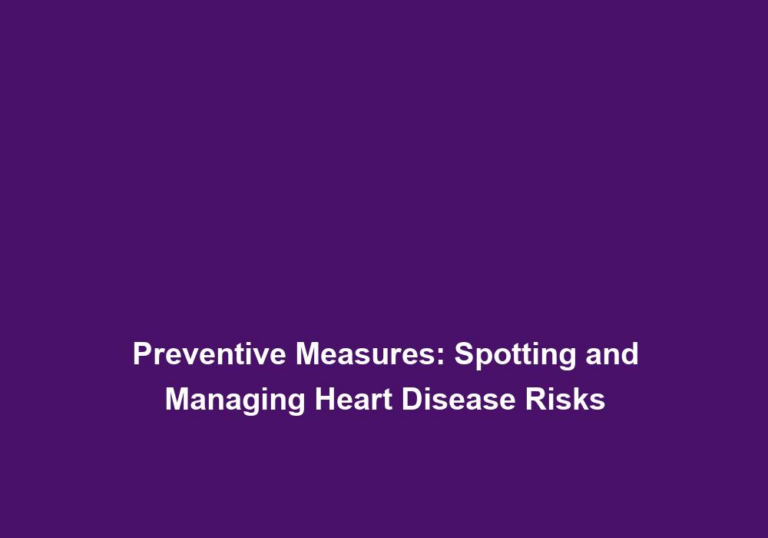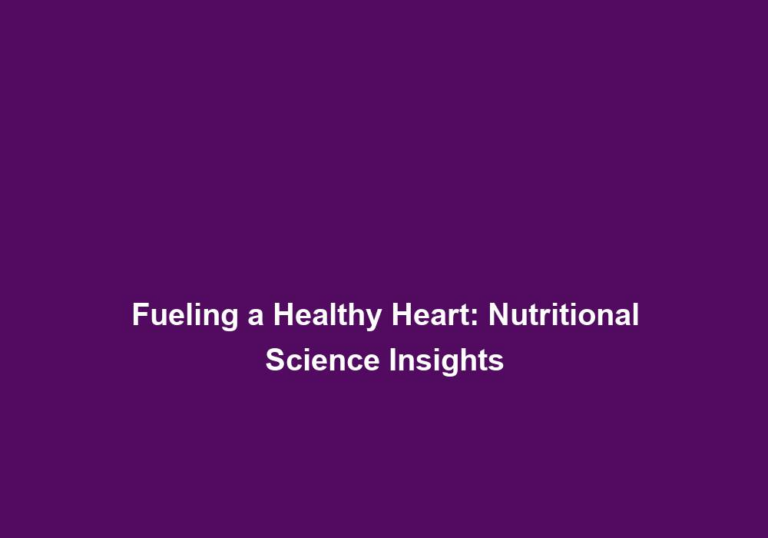Garlic and Heart Health: A Flavorful Path to a Healthy Heart
Garlic has long been celebrated for its distinctive flavor and culinary uses, but its benefits extend far beyond the kitchen. Scientifically known as Allium sativum, garlic is a close relative of onions, shallots, and leeks. For thousands of years, it has been cultivated and enjoyed not only for its taste but also for its medicinal properties. Garlic contains various bioactive compounds, including allicin, which is responsible for its potent aroma and numerous health benefits.
The Magic of Garlic
Lower Blood Pressure
High blood pressure, or hypertension, is a leading risk factor for heart disease. Fortunately, garlic has been shown to help lower blood pressure levels. The active compounds in garlic promote the relaxation of blood vessels, reducing resistance to blood flow and ultimately leading to a decrease in blood pressure. By incorporating garlic into your meals, you can maintain healthy blood pressure levels and contribute to overall heart health.
Some additional points to consider:
- Studies have shown that garlic supplements can have a significant impact on lowering blood pressure levels.
- Garlic may also help improve endothelial function, which is essential for healthy blood vessels.
- The beneficial effects of garlic on blood pressure may be attributed to its ability to increase the production of nitric oxide, a molecule that helps relax and widen blood vessels.
Cholesterol Reduction
Another way garlic promotes heart health is by helping to lower cholesterol levels. High levels of LDL cholesterol, often referred to as “bad” cholesterol, can lead to the formation of plaque in the arteries and increase the risk of heart disease. Consuming garlic has been found to reduce LDL cholesterol levels while increasing the levels of HDL cholesterol, known as the “good” cholesterol. This balance can have a positive impact on heart health and lower the risk of cardiovascular issues.
Additional details about garlic’s effect on cholesterol:
- Garlic supplements, particularly aged garlic extract, have been shown to significantly reduce total cholesterol levels in individuals with high cholesterol.
- The sulfur compounds in garlic are believed to inhibit the enzymes responsible for cholesterol synthesis in the liver, leading to lower levels of LDL cholesterol.
- Garlic’s ability to increase HDL cholesterol levels may be attributed to its antioxidant properties and its ability to enhance the activity of enzymes involved in cholesterol metabolism.
Anti-inflammatory Properties
Chronic inflammation in the body can contribute to the development of heart disease. Garlic possesses anti-inflammatory properties that can help combat inflammation throughout the body. By reducing inflammation, garlic supports a healthy cardiovascular system and reduces the risk of heart-related complications.
Here are some additional points to expand on garlic’s anti-inflammatory effects:
- Garlic contains sulfur compounds, such as allicin, that have been shown to inhibit the production of inflammatory substances in the body.
- The antioxidants in garlic help neutralize free radicals, which can contribute to inflammation and oxidative stress.
- Studies have suggested that garlic may help reduce the levels of certain inflammatory markers, such as C-reactive protein (CRP), in the blood.
Incorporating Garlic into Your Diet
Now that we understand the incredible benefits of garlic for heart health, let’s explore some delicious ways to incorporate this aromatic bulb into our daily meals:
1. Roasted Garlic
Roasting garlic brings out its natural sweetness and mellows its pungency, making it a versatile and delicious addition to a variety of dishes. To roast garlic, simply cut off the top of a whole garlic bulb, drizzle it with olive oil, wrap it in aluminum foil, and bake it in the oven at 400°F (200°C) for approximately 40 minutes or until the cloves become soft and golden. Once roasted, the garlic can be spread on bread, mixed into mashed potatoes, or even added to salad dressings for a burst of flavor.
Some additional ideas for using roasted garlic:
- Mix roasted garlic with butter or olive oil to create a flavorful spread for bread or crackers.
- Add roasted garlic to homemade hummus or dips for a unique twist.
- Use roasted garlic in pasta sauces, soups, or stews to enhance the overall taste and aroma.
2. Garlic-infused Oil
Garlic-infused oil is a simple yet effective way to incorporate the flavor and health benefits of garlic into your cooking. To make garlic-infused oil, gently heat olive oil in a saucepan, add crushed garlic cloves, and let it simmer on low heat for about 10 minutes. Remember to strain the oil before storing it to remove any garlic solids. Use this fragrant oil in dressings, marinades, or simply drizzle it over roasted vegetables for a delicious and heart-healthy twist.
Here are some additional ideas for using garlic-infused oil:
- Toss roasted or steamed vegetables with garlic-infused oil before serving.
- Use it as a base for sautéing vegetables or cooking meats for added flavor.
- Drizzle it over cooked pasta or grains to enhance the taste and aroma.
3. Garlic Supplements
If you find it challenging to consume enough garlic through food alone, garlic supplements are a convenient alternative. These supplements typically come in the form of capsules or tablets and provide a concentrated dose of garlic extract. However, it’s important to consult with your healthcare provider before starting any new supplement regimen to ensure it aligns with your specific health needs.
Some important points to consider about garlic supplements:
- Garlic supplements vary in their formulation and potency, so it’s crucial to choose a reputable brand and follow the recommended dosage.
- Look for supplements that contain standardized garlic extract, which ensures consistent levels of active compounds.
- Garlic supplements should not be used as a substitute for a balanced diet but rather as a complement to a heart-healthy lifestyle.
4. Fresh Garlic in Cooking
One of the simplest ways to enjoy the benefits of garlic is by using it in its fresh form while cooking. Finely chop or mince fresh garlic cloves and add them to your favorite recipes, such as stir-fries, pasta dishes, or soups. Garlic beautifully enhances the flavors of various dishes while infusing them with its numerous health benefits.
Here are some tips for using fresh garlic in cooking:
- To maximize the health benefits, let chopped or minced garlic sit for 5-10 minutes before cooking to allow the beneficial compounds to fully develop.
- Experiment with different cooking techniques, such as sautéing, roasting, or grilling garlic, to bring out different flavors and aromas.
- Be mindful of the cooking time and temperature when using fresh garlic, as excessive heat can diminish some of its health-promoting properties.
Conclusion
Garlic not only adds depth and flavor to your favorite dishes but also offers a flavorful path to a healthy heart. Its ability to lower blood pressure, reduce cholesterol levels, and combat inflammation makes it an excellent addition to a heart-healthy diet. Whether you choose to roast it, infuse it in oil, take supplements, or simply use it fresh in your cooking, garlic can be your ally in promoting cardiovascular well-being. Embrace the magic of garlic and embark on a journey towards a healthier heart today.
Note: This article is purely informational and should not replace professional medical advice. Always consult with a healthcare provider before making any significant changes to your diet or lifestyle.







